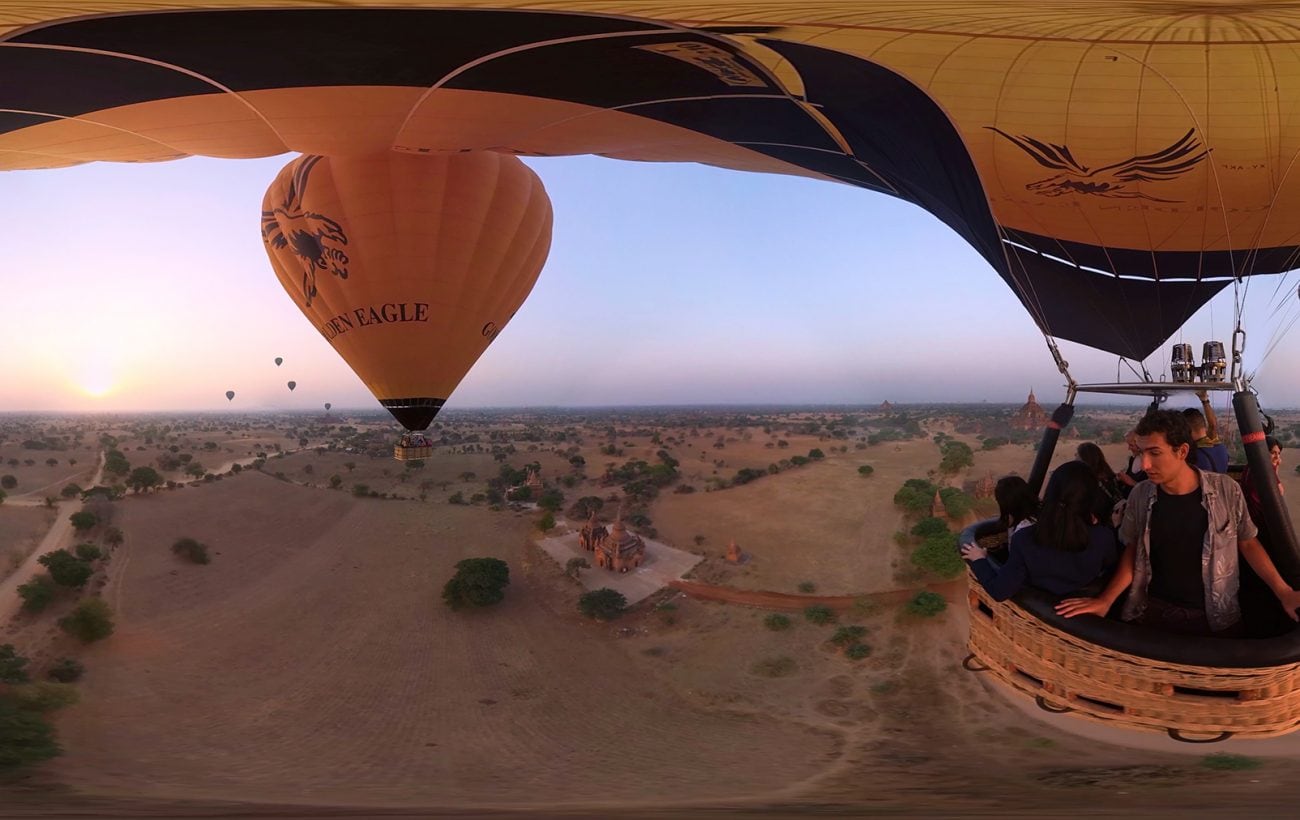Some people just tend to look a little awestruck. As if, in each and every second, they realize anew the insanity and wonder of the world around them. Daniel Bury is exactly that kind of person. And when you get to know him, the first thing you want to do is tell him all about yourself – he’s a great listener. Those might be two of the reasons why he has found himself travelling the world since 2016 – while making the most astonishing encounters, which he captured in his 360-degree documentary series Chasing The World. This approach awarded him his second appearance at the Cannes NEXT this year.
Chasing the World VR was conceived as a six-part series, shot in Myanmar, Nepal, the Philippines, Morocco, Brazil, and Peru – four of which have already been finished. I had the chance to watch them.
It all began in 2012 in Sumatra, when Daniel and some close friends shot a conventional, two-dimensional documentary. Also called Chasing The World, it won first place in its category at ITVFest in 2014, spurring the drive to create an entire series on its foundations. But as always in life, ideas evolve: having Daniel discovered VR, he was determined to skip on conventional film and go for the full 360 degrees instead, while remaining entirely self-funded.
Chasing Transformation: A Glimpse Into the Unknown
I’m on a mission to experience reality, in the point of view of diverse people and cultures around the world.
Daniel utters these words in the introduction of the first episode, which takes place in Myanmar. He keeps his promises.
The series embodies the desire to travel, which it shares with many youtubers who promote their travel-vlogs with never-ending adventures. For Chasing the World, Daniel Bury employed one of their tricks to great effect: like them, he himself guides the viewer through the country personally. We see him holding the tripod, we observe him playing with the kids from the village, we sit next to him on the roof of a bus and in the same boat. His voice accompanies the film in narration. He is the corporeal thread that ties together the individual episodes, offering the viewer a sense familiarity. Reaching beyond Lonely Planet and the “life goals + bucket list” mantra, Chasing the World explores places unreachable for a common tourist – and with that, the places where VR really gets into its own.
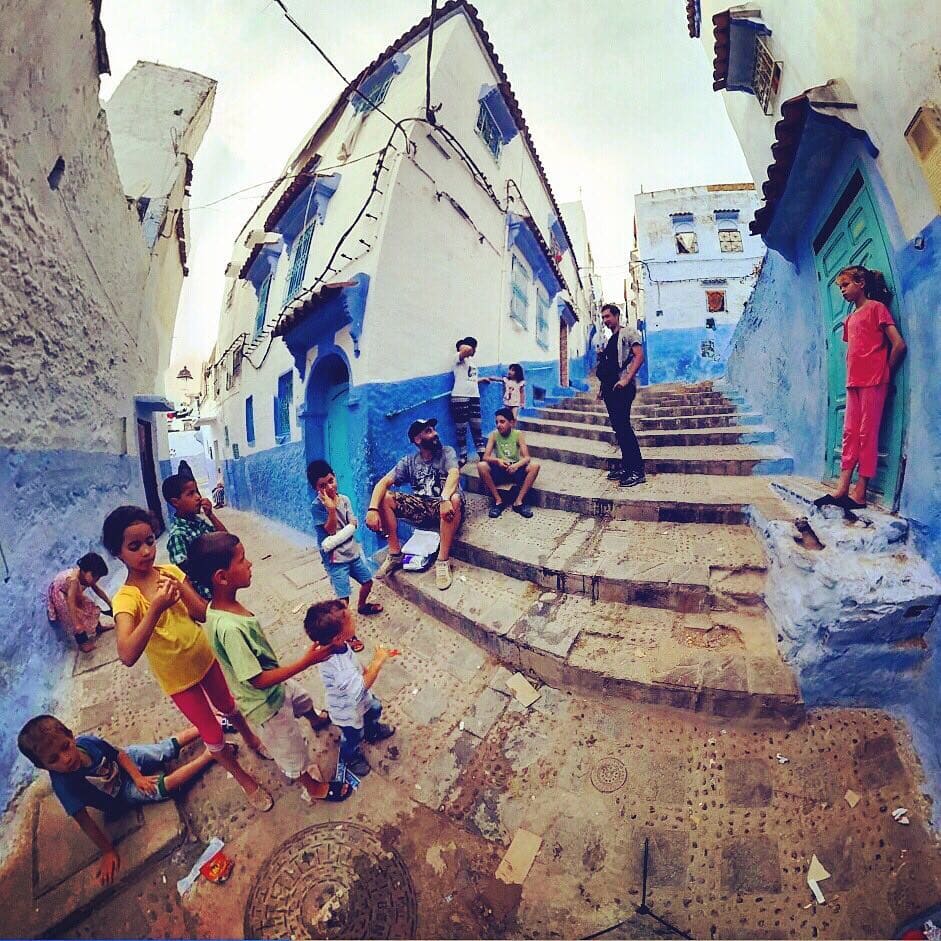
How did he prepare, I wished to know. His answer:
Of course I did some research beforehand so I had a general idea of the types of experiences and people I would meet. However, the only way to really go off the tourist track is to be invited in person. Everything that happened on my travels was completely unplanned. For example, I met U Kyi Thaw, the revolutionary Burmese poet, on a train from Bagan to Mandalay. He invited me to travel with him around the country the next day. Everything was spontaneous. The people and the stories found me.
And it’s all about transitions. The poet U Kyi Thaw, a proponent of democracy and freedom of speech in Myanmar, invites the foreigner Daniel to a reading where poets and writers assemble to discuss politics – something that would have landed them in big trouble just a couple of years ago. In Morocco, Daniel visits a family of nomads in the mountains, depicting how the lives of Moroccan nomadic peoples has changed over time. The Philippine episode sweeps over stunning tourist attractions such as white beaches and idyllic islands only to be juxtaposed by the harsh realities hidden within: villages drowning in landfill, their inhabitants scavenging the trash for every last bit of nourishment. In Nepal, Daniel travels right through the epicenter of the country’s devastating earthquake of 2015. Virtually everyone who lives there lost family members and their home during the catastrophe. Little by little, they work on re-erecting their homes. Yet, although they have next to nothing, they invite Daniel for dinner – the camera always in tow.
As Daniel was filming, he learned the rules for shooting 360. I asked for some advice:
If filming a shot with camera motion, the camera needs to be attached to a moving object or vehicle. The camera should not move independently, or it can cause motion sickness. The camera should always be eye level as well. Filming a guerrilla documentary in 360 was amazing because I did not need to point the camera in anyone’s direction. The camera was discreet and filmed in all directions, so people acted naturally. I think it’s the most effective ways to film a documentary because people acted like themselves all the time without any fear of the cameras.
Chasing Wisdom: Memorable Encounters
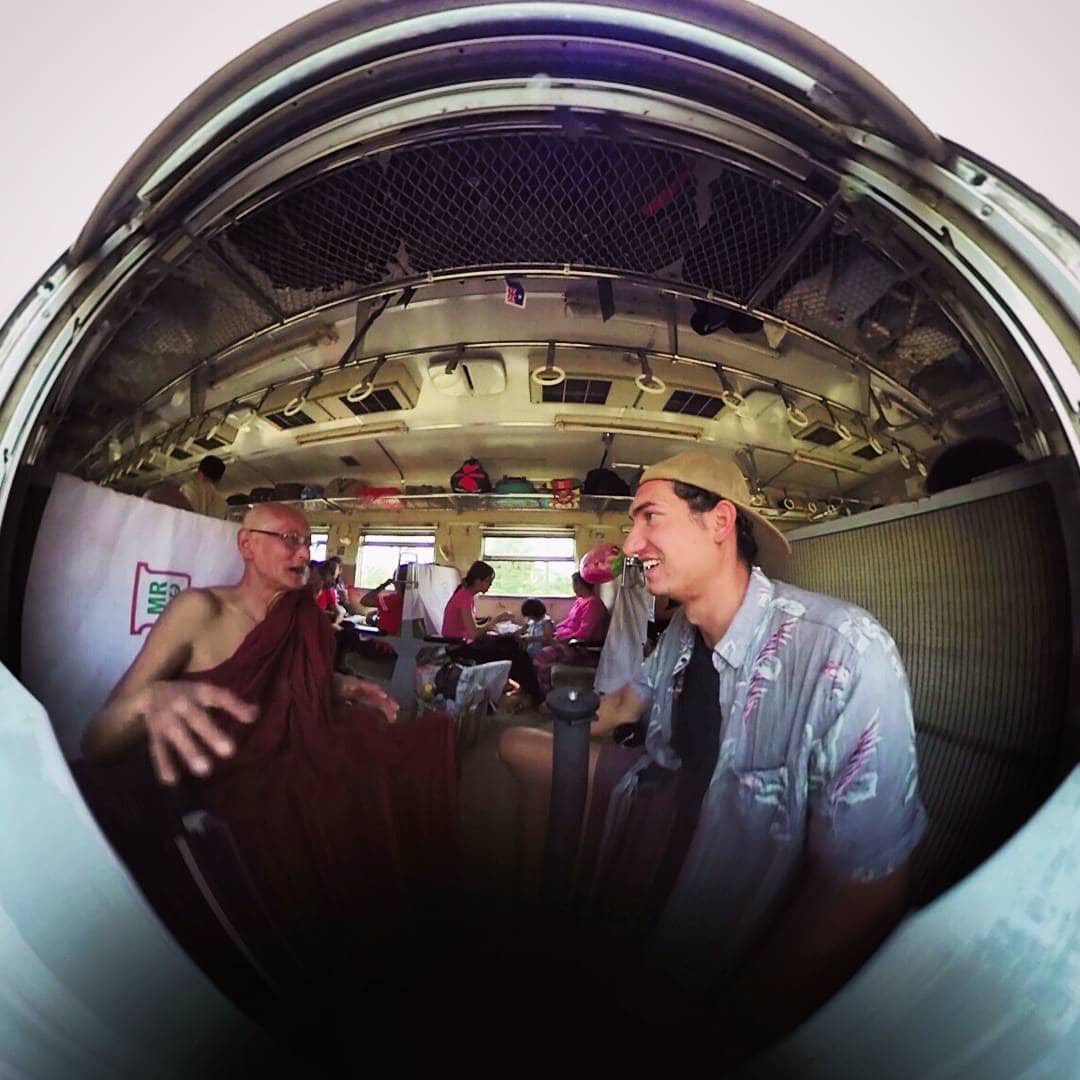
It’s true: In particular, the series thrives on the encounters Daniel makes on his travels. For me, the time a Philippine mother explains how she must feed six hungry mouths with what little she can retrieve from the trash, marked the emotional zenith of the series – a short scene with a lasting aftertaste. And it’s not the only one. U Kyi Thaw, the poet who invites Daniel to the aforementioned gathering of his poet and writer friends, also recounts the harrowing time he and his wife were incarcerated and tortured under the military junta. In Nepal, a young man named Hari Roka guides Daniel through the Himalayan mountains to show him his home town, that had been ruined during the earthquake.
Looking back, my goal to create Chasing the World in VR on my own was the most foolish undertaking ever. It was an impossible endeavor. But… somehow, I pulled it off. I was simultaneously figuring out how to tell a story in 360 while living out of a backpack in remote areas of the world. Every day was a new challenge. My rigs kept breaking, I struggled to communicate with locals and I was carrying all of my equipment on my own. I met Hari on a bus, and Hari spontaneously negotiated us into a tiny plane going to a remote region of the Himalayas. When our plane arrived, we had to trek half a day to the nearest village with all of my equipment. And then, we had to hitchhike down the Himalayas for days. My back never fully recovered from the experience. At the end of each day, I would spend at least 4 hours copying the footage to hard drives from the SD cards.
Chasing Life: Music and Editing Creating Grand Emotions
It is not an easy feat to find the right rhythm for 360-degree films, especially not in the confines of a documentary. Too hasty cuts disorient the viewer and impede their ability to follow the story. Too slow, and things get boring quickly. Or, as Daniel puts it:
360 is tricky because it changes all the rules for editing. First of all, editors need to give viewers time to look around each scene. Therefore, it’s important not to change shots too quickly. Always center the most important elements of the image in one place, and always be aware of where people are most likely to be looking at the start and end of each shot. Also, text and dialogue can be used to subtly direct viewers.
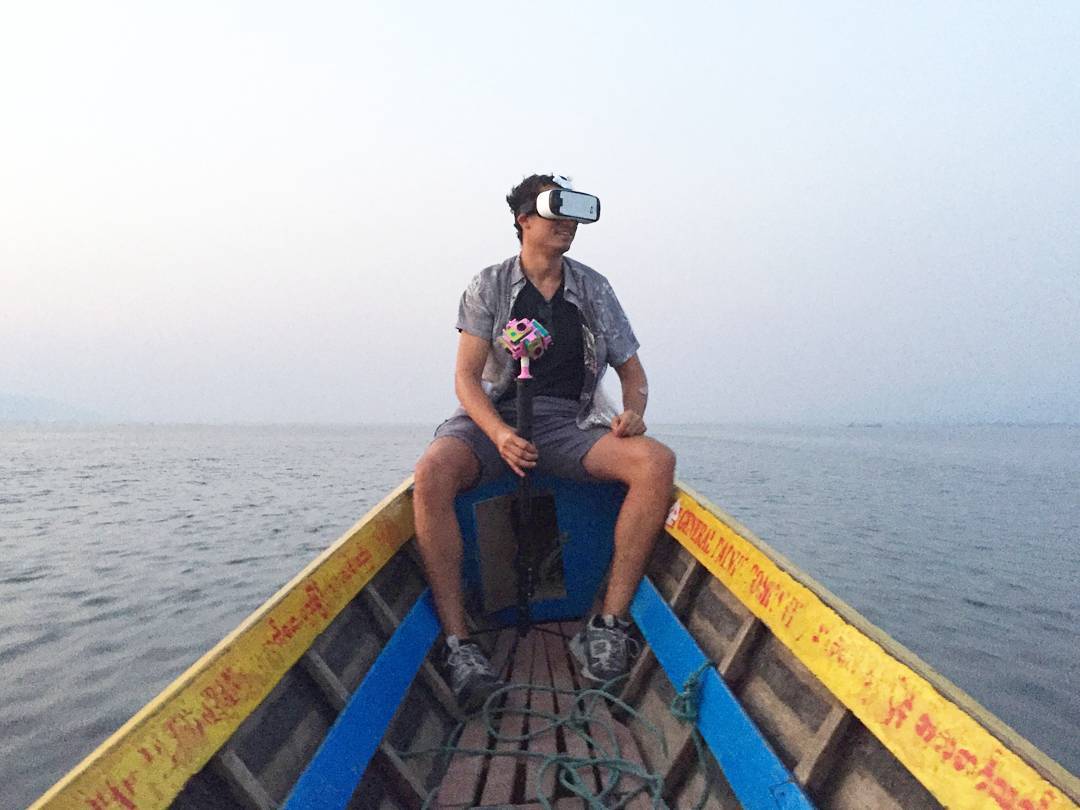
Daniel intersperses tranquil landscapes with accelerated time lapses; he embeds intimate conversations with people he meets along the way and interlaces these with scenes from their lives. He affords the viewer just enough time to think and look around while never dawdling. The music frames the action perfectly, enhancing the atmosphere and unearthing truly emotional moments. In light of this, (the few) shaky and out-of-focus shots appear trivial, especially put into the context of travelling. What counts is the feeling of having experienced the same trip – something Chasing the World accomplishes with grandeur.
At the end, I asked Daniel, what would be the key for good storytelling in 360 in his view:
In my opinion, virtual reality is most compelling when it is capturing real reality. Many 360-degree or VR documentary pieces are scripted. A team will go to a location with a shot list, and they manipulate the real world to film their pre-written script. In my opinion, reality should unfold naturally, and the filmmaker should capture it as it organically unfolds. Of course, a script or plan of some sort is necessary, but filmmakers should allow the chaos of the real world work its magic. When this is done right, the resulting stories and moments are incredibly compelling.
About Daniel Bury
Daniel commands a professional background made for 360-degree films and VR, having studied Film Direction and Digital Arts at Chapman University in California and subsequently working as a director and VFX artist on more “traditional” films and commercials. However, his discovery of VR changed everything.
Daniel and I got to know each other briefly in Berlin. Soon enough, though, we were both travelling quite a lot – a shared passion – and lost track of each other. After that, we happened to be in New York at the same time and met for a coffee, where he told me that the second episode of his series would premiere at the Cannes Film Festival. Following the Myanmar episode in 2017, the Nepal film scored him an invitation to Cannes NEXT, Cannes Film Festival’s marketplace for VR, where visitors can let themselves be spirited away to Nepal in the VR Library until the 13th of May. Reason enough to finally write about Chasing the World! Daniel kindly answered my questions in written form, as once again he finds himself jetting around the world, visiting his chosen home of Australia where he is currently shooting a commissioned production in 360 degrees. Those wanting to find out more about Daniel can read this neat interview on Mettle or follow him on Twitter. While the release of his series is still in proceedings, those who cannot make it to Cannes can however gather some impressions from the website.
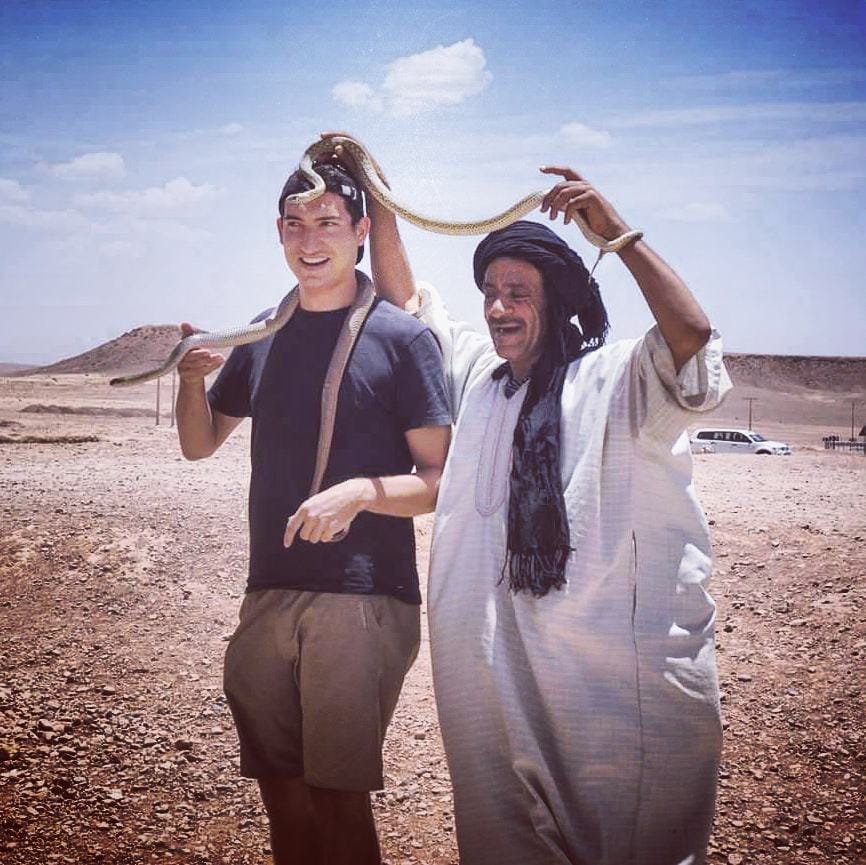
What else to watch at Cannes NEXT?
Other than Chasing the World VR, Cannes NEXT has many other experiences on offer worth a watch. Although I myself unfortunately cannot personally attend, I have compiled a small selection from the VR exhibit – which I have chosen most subjectively from the program:
- Arden’s Wake in an 18-minute long version
- The first episode of Awake, the new VR project from the makers of VR Noir, Start VR
- Wolves in the Walls, interactive and already celebrated during the Sundance festival
- Ballavita, Viennese company Amilux Film’s creative and promising VR film
- Crow: The Legend, another film from Baobab Studios, the company that just knocked me off my socks with Jack: Part One
- Three Cirque Du Soleil experiences produced by Felix & Paul Studios from Canada, the same company that impressed me with their VR film Miyubi
- The Last Chair, another documentary series I had the pleasure of watching an episode of at Tribeca. Calm and beautiful
- Le Musk, an experience working with scents according to the program. How musky do you like it?
Translated by Jan Mc Greal
